Reconversion of conventional production systems to traditional – agroecological systems, with emphasis on in situ conservation of Andean tubers as a climate change adaptation strategy for small producers in Boyacá-Colombia
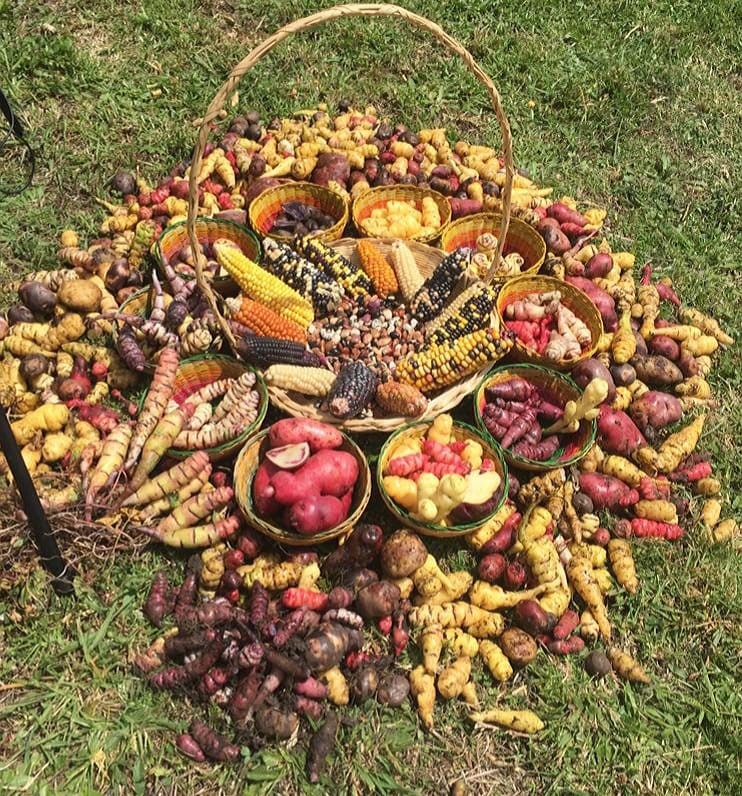
Summary
Implemented in the department of Boyacá, Colombia, since approximately 2000, this solution aims to preserve and promote the cultivation and consumption of tubers through local traditional knowledge to improve climate resilience and enhance the food security of local communities.
The Andean tubers of ibia/oca (Oxalis tuberosa Molina), cubio/mashua/isañu (Tropaelum tuberosum Ruíz & Pavón), and ruba/melloco/olluco/papa lisa (Ullucus tuberosus), usually catalogued as marginal, undervalued or underutilized, have been cultivated in the mountainous areas of Boyacá since pre-Hispanic times, They have been an important part of the food and medicinal culture of the current populations, who have inherited and transmitted from generation to generation the techniques of their cultivation, management and uses, including the phytogenetic material (species and morphotypes). These crops are traditionally produced with agroecological techniques based on the use of biocides and organic fertilizers to maximize agrobiodiversity and diversify production, which is focused on self-consumption, exchange and marketing of surpluses. Because of their great capacity to adapt to different climatic conditions, resistance to pest attacks and tolerance to drought, Andean tubers can be cultivated in different ecological zones distributed between 2400 and 4000 m altitude. These physiological and ecological characteristics, together with their nutritional and medicinal properties, give them a high potential as crops that can reduce climatic and food vulnerability, in addition to strengthening the adaptive capacity of Andean farmers.
This solution overview synthesizes the different local initiatives of the Asociación Innovadora de Tubérculos Andinos de Boyacá (AITAB), which together with other public and private actors, especially academia (Pontificia Universidad Javeriana de Colombia), have made it possible to revalue the cultivation and uses of tubers through participatory information generation processes based on the traditional knowledge possessed by local farmers. The aim of the activities is to promote the cultivation and consumption of these products as a strategy for CCA and in situ conservation through the reconversion of the conventional-commercial production approach to an agroecological-self-sufficient one, in the municipalities of Ventaquemada, Turmequé and Tibasosa, in the department of Boyacá.
(Por favor consulte el documento adjunto para la versión en ESPAÑOL)
Overview
- Location:
- Implementation sites:
-
- Single country
- Single location
- Mountain region:
-
Northern Andes
- Province:
-
- Boyacá Department
- Site locations:
-
Ventaquemada, Turmequé and Tibasosa municipalities
- Solution scale:
- Area Covered:
-
- 360 km2
- Ecosystem type(s):
- Solution type(s):
- Climate impact(s) addressed:
- Climate impact time-scale(s):
- Main benefit associated with the solution:
- Co-benefit(s) associated with the solution implementation:
- Implementation timeline:
-
- 2022
- Sendai targets:
-
Solution details
Main beneficiaries & outcomes
Direct beneficiaries: Approximately 100 inhabitants of 30 small-scale traditional farming households or farms with an agroecological approach who participate in different initiatives for the management, cultivation and processing of Andean tubers.
Indirect beneficiaries: 37,000 inhabitants of the three municipalities where the Andean tuber is produced and marketed.
The role and importance of women in the management and conservation of Andean tubers is highly relevant due to their tradition, interest and preference in the care of household food and health. Women in this case study have shown great interest and experience in the management, cultivation and use of food plants (where Andean tubers stand out), medicinal and ornamental plants, placing special emphasis on maintaining and incorporating different varieties and seeds through the sharing or exchange between local farmers and other interested people. It is important to point out that women are the ones who lead the processes of management, conservation and use of andean tubers, as evidenced by their leading role in the different innovation activities, such as the search for novel preparation and consumption options through the publication of a recipe book, and in the representation and coordination of AITAB, which is in charge of a farmer and local leader from Turmequé.
Planning and implementation
Local organizations: AITAB; Asociación Semillas; Supatá Community Action Board (JAC); Tibasosa Farmers’ Market Association (ASOMERCAMPO); Tibasosa Artisans’ Association (ARTIBASOSA); Turmequé Agroecological Association (ASOAGROTURMEQUÉ). These are grassroots organizations that bring together small local agroecological and Andean tuber producers dedicated to their cultivation, management, processing and marketing, in addition to being the local link in their respective municipality with other institutions interested in agroecology and Andean crops, such as universities, national and international public and private entities.
Academia: The Pontificia Universidad Javeriana, National University of Colombia and the Juan de Castellanos University Foundation, are institutions that have conducted research in the region and have supported local organizations and farmers on issues related to the agroecological transformation of production, recovery and documentation of traditional knowledge on the management, conservation and uses of Andean tubers.
Public institutions and local governments: The Governor’s Office of Boyacá and the Secretary of Agriculture of the municipality of Turmequé support the management of productive projects and the organization of agricultural fairs where farmers can market or exchange Andean tubers and other products. The Colombian Agricultural Research Corporation (AGROSAVIA) provides technical assistance and conducts research on genetic improvement, germplasm management, and conservation.
Private institutions and NGOs: Agrosolidaria; Corporation for the sustainable and participatory development of small farmers (Corporación PBA); Diversidad Rural; and Victoria Granja Agroecológica. These institutions support different initiatives for agroecological production, conservation, processing, and marketing of Andean tubers.
Finance
The solution has been financed with approximately 58,000 USD provided by the PBA Corporation for research on cultivation and use, creation of seed banks for the conservation of existing tubers, and cooking workshops focused on the preparation of new ways of preparing food with tubers.
Innovation
- Participatory techniques with the involvement of all family members for the collection and analysis of information at the farm level, including farm maps from before and after the implementation of the agroecological approach, timelines to analyze changes in crop management and preferences over the last 50 years, and the daily food menu to understand the socio-cultural-economic dynamics of the family diet (consumption schedules, types of food, forms of preparation and origin) and the role of Andean tubers in the local diet.
- Analysis of landscape conditions and systemic connectivity of Andean tuber-producing agroecosystems with the different types of surrounding natural vegetation, forest remnants, paramos and water bodies.
- Revaluation of local knowledge on the use of the different species and morphotypes of Andean tubers through various traditional forms of preparation and consumption, and new recipes (jams, sweets, cakes, soups, preserves, etc.) as a strategy to encourage their consumption, especially among children and young people, and to generate new market niches.
Performance evaluation
Given that this case is not a specific project, but rather represents a socioeconomic-cultural process of productive reconversion from a conventional, intensive-commercial approach to a diversified agroecological approach, which focuses on self-consumption and where the main actors of the change have been the local small farmers with the support of different institutions (especially academic ones), there is no formal evaluation of these changes. In this regard, the different socioeconomic and environmental research conducted in the three municipalities ( see bibliographic references) can be considered as assessment tools. These studies emphasize the socioeconomic, cultural, biophysical, organizational, institutional and governance implications, and reflect positive changes that strengthen the adaptive capacity and reduce the climatic and non-climatic vulnerability of small farmers of Andean agroecological tubers.
Long term project sustainability and maintenance
The cultivation of Andean tubers has been an activity that has always been part of the production systems throughout time, from pre-Hispanic times, the colony, the republic and the different historical periods that have been changing the production preferences of local farmers and reconfiguring their systems. In this sense, the most representative example may be the change from the traditional productive approach with low external inputs and predominance of two or three cash crops (wheat, potato, barley or corn) mixed with subsistence polycultures, to an intensive approach in the use of agrochemicals and synthetic fertilizers promoted by the green revolution and state policies since the 1970s. Since 2000 and after successive national socioeconomic-political crises that affected the food security of the population, the agroecological approach gained momentum as a resilience proposal in the face of market dependence and the need for farmers to recover their food security and sovereignty, also allowing them to reduce their vulnerability and increase their capacity. The hardiness of Andean tubers against pest attacks and drier conditions are factors that favor the sustainability of their cultivation and use by local populations, giving them a commercial, socio-cultural and nutritional value. The sustainability of these crops, also inserted in an agroecological approach of diversified production, is guaranteed by the farmers.
On the other hand, the generational change in the households of Andean tuber producers may represent a threat to sustainability, since the young population is losing interest and taste for these foods, which is worsened by the growing migration of this population to the cities. Although there is significant support from academia and other public and private actors in the conservation and expansion of the uses of Andean tubers, the lack of involvement of other institutions that generate incentives and public policy, such as governments at different territorial levels, represents a major challenge for the long-term sustainability of initiatives to recover and revalue Andean tubers and the agroecological approach to which they are linked.
Capacities for design and implementation
Knowledge
The knowledge in the cultivation, management and uses of Andean tubers are considered locally as a cultural and phytogenetic heritage (species and current morphotypes) of the pre-Hispanic native peoples that inhabited the current areas where they are still cultivated, especially the Muisca People. It is considered that the cultivation techniques and different current food and medicinal uses, including germplasm (seeds/tubers), have been transmitted from generation to generation since pre-Hispanic times without having undergone major changes. This is evidenced by current testimonies of their use and indicated in historical documents. For example, farmers believe that consumption of cubios reduces inflammation of the urinary tract and prostate, and may also reduce testosterone levels or sexual desire in men. This coincides to a great extent with information documented in the Jesuit Vademecum of medicinal plants of Peru from the XVII century, in which Father Bernabé Cobo (1580-1657) indicates about the cubio: “The root represses the venereal appetite, according to what the Indians say. The decoction of these roots, drunk on an empty stomach with sugar, removes coughs. The decoction with the roots of parsley and drunk on an empty stomach with lime juice breaks kidney and bladder stones”. Some elements of the agroecological approach used in today’s small-scale production also have origins in traditional techniques such as diversified orchards with polycultures in agroforestry systems and organic fertilizers.
Technology
There is no sophisticated or transcendent technological component that has allowed the productive reconversion, revaluation and in situ conservation of Andean tubers. Rather, this experience is based on the recovery and appreciation of traditional knowledge and practices of cultivation and management of agrobiodiversity, which are related to simple and local agroecological technology, such as maximization of agrobiodiversity, production diversification, incorporation of trees and shrubs, polycultures, crop rotation, maintenance of soil fertility through the preparation and application of organic fertilizers (compost, manure, humus), and ecological control of pests, weeds and diseases.
Political / Legal
Despite the involvement of the municipalities of Ventaquemada, Turmequé and Tibasosa, especially in aspects related to market access and associative marketing, there is still a lack of more comprehensive support from governments at different levels (municipalities, departments and administrative regions), which is reflected in the absence of specific policies or incentives to promote the cultivation of Andean tubers within territorial development plans as an option for CCA in small-scale agricultural systems.
Institutional
The experiences of reconversion of conventional production systems to agroecological systems, and the revaluation and rescue of underutilized Andean tubers, have allowed the generation of local organizational strengthening processes, reflected in the actions of the different producer organizations and the institutional involvement through academia and some public and private entities. Local organizations such as AITAB, Agrosolidaria, ASOMERCAMPO, ARTIBASOSA, ASOAGROTURMEQUÉ, in conjunction with the municipalities of Ventaquemada, Turmequé and Tibasosa, the Government of Boyacá, AGROSAVIA, and especially with the Pontificia Universidad Javeriana, the National University of Colombia and the Juan de Castellanos University Foundation, have provided technical support, training, inputs and equipment for agroecological and Andean tuber production, including strengthening access to associative exchange and marketing channels, both locally and with nearby urban centers. This has made it possible to consolidate the process of productive reconversion and in situ conservation of Andean tubers.
Socio-cultural
The reconversion from conventional systems ( focused on the intensive use of agrochemicals and synthetic fertilizers promoted by the green revolution and state policies since the 1970s), to agroecological systems (focused on the production and in situ conservation of the undervalued Andean tubers), was promoted mainly by the farmers themselves around the year 2000. Due to the successive socioeconomic-political crises that have affected the food security of local small farmers, the recovery of the agroecological approach is promoted as a proposal for resilience in the face of market dependence and the need to recover food security and sovereignty. This productive reconversion process is gaining strength with the formation of local producers’ organizations (AITAB, Agrosolidaria, ASOMERCAMPO, ARTIBASOSA, ASOAGROTURMEQUÉ), and the support provided by academia in participatory research activities and the generation of socioeconomic, cultural and environmental information on agroecological production, revaluation and in situ conservation of Andean tubers, considered to have a high potential for CCA due to their hardiness against pest attacks and resistance to droughts, but underutilized and undervalued in conventional markets.
Outlook & Scalability
Barriers and adverse effects
No adverse effects of this practice have been identified.
However, the generational change in the households of Andean tuber producers may represent a barrier to sustainability, since the young population is losing interest and appreciation for these foods, a situation that is worsened by the growing migration of this population to the cities. Although there is significant support from academia and other public and private actors in the conservation and expansion of the uses of Andean tubers, the lack of involvement of other institutions that generate incentives and public policy, such as governments at different territorial levels, also represents a barrier to the promotion of the initiatives to recover and revalue Andean tubers, together with the agroecological approach to which they are linked.
Transformation and future outlook
The implementation of agroecological practices for the conversion of small-scale production systems, the use, revaluation and in situ conservation of Andean tubers, has a high potential to reduce vulnerability and increase the adaptive capacity of Andean livelihoods, mainly due to the hardiness of these crops against pest attacks and resistance to droughts, events that could be intensified by climate change. This favors the sustainability of their cultivation and use by local populations, for whom the value of these crops is not only commercial but also sociocultural and nutritional.
Potential for upscaling and replication
Due to the high rusticity of Andean tubers and the ease and low cost of implementing agroecological techniques and practices, the possibilities for scaling up and replication have great potential for other mountain areas, both in the Andes and in other regions. In addition, the traditional techniques for growing these tubers, which are widespread throughout the Andean region, are still part of the farmers’ traditional knowledge.


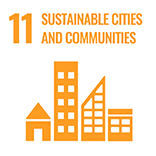
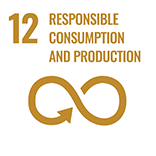

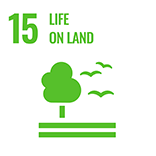

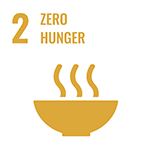



Comments
There is no content